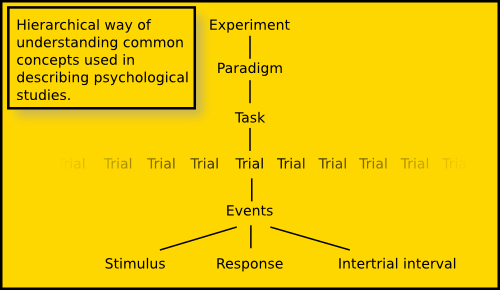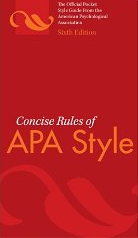Experimenter, participant, and subject
The person supervising an experiment is called an experimenter. The person that is being tested is called a participant or subject. Both terms are correct, but the word participant is nowadays preferred, as it implies the fact that the participant participates voluntary.
Ethics
All research should be carried out in accordance with ethical guidelines. In essence, ethical guidelines describe the conditions under which human experiments should take place. All research institutions have ethical guidelines. They protect participants, researchers, and institutions against unethical practice. Examples of unethical practice are: Not keeping a participant’s personal details, such as their age, confidential, or confronting a participant with emotional images without having told the participant in advance that this would be part of the study.
Setup and laboratory
Psychological laboratories are typically nothing more than a quiet room with a computer, a screen, and often a specialist keyboard fit for extremely precise reaction time measurement. For most research, it is essential that participants (also called subjects) can concentrate. The room must be quiet at all times. If this cannot be guaranteed, the experimenter might consider using earplugs. It is recommended that the participant is supervised for the duration of the study. This way, the experimenter can guarantee that the participant carries out the experiment, and that if the participant has a problem, he or she can ask for clarification.
On the picture below, you see a typical psychological laboratory with a computer monitor, regular keyboard, LED display, and custom response device.

Stimulus
A stimulus is something an experimenter wants you to see, hear, smell, taste, etc. For example, an experimenter might want to study how well you can taste different kinds of sweetness, and the experimenter might give you some water with sweetener. In that case, the stimulus is the water with sweetener. A visual stimulus is something that is shown to you visually, such as an image, shape, or word on the computer screen. An auditory stimulus can be the sound from a computer speaker.
| The words stimulus comes from the classic language Latin. The plural is stimuli. Thus: One stimulus. Two stimuli. Students often get this wrong! |
There are specific types of stimuli. An imperative stimulus is typically one that participants need to respond to. A target stimulus is typically one that participants need to look at (and respond to). A flanker and distracter are stimuli that are added to the experiment to study the effect of other information that the main stimuli. A distracter causes distraction!
Task
A task is the way you are asked to respond to stimuli. For example, you might have a color discrimination task in which you need to press the button "b" when you see a blue rectangle and the button "g" when you see a green rectangle. The word task and paradigm often mean similar things, and it depends on the context what they mean exactly.
Mental skills
A skill is something that you can do. For example, you might have the skill to ride a bicycle, but maybe you do not have the skill to fly a plane. All skills require certain mental skills. For example, in order to be able to become a pilot, you need to be good in map reading and in mathematics.
Paradigm
A paradigm is a way of studying a skill. A paradigm can contain multiple tasks (e.g., task-switching paradigm), although most paradigms have just one task (e.g., visual search paradigm).
Trial
The word trial has different meanings in different academic fields. For example, in Medicine, a trial of a new medication can refer to a study that can take weeks, months, or sometimes even years. In experimental psychology, a trial refers to the events in a task. For example, one trial in the Stroop task is the presentation of a colored word. In most cognitive psychological experiments, one trial only lasts a few seconds, and an experiment consists of tens or hundreds of trials.
Response Time (RT)
The time between a stimulus and a response is the response time. The words response time and reaction time are both used. Typically, researchers mean the same, although some researchers distinguish between the two.
It is important to understand the different between simple and choice response time tasks.
In choice response time tasks, you need to make a choice between multiple response types. For example, you might be presented with the word "left" or the word "right", and you need to decide whether you need to press the left or the right shift button. In simple response time tasks, there is only one response.
Response times in simple response time tasks are shorter (starting from around 150 ms) than in choice response time tasks (starting from around 250 ms).
| For a demonstration of these two types of response time tasks, see the Deary Liewald task here in the PsyToolkit experiment library. |
Response
A bodily change that can be physically measured. In psychology, this is often pressing a button, saying a word, moving the eyes. But there are more, including change in heart rate and sweating.
Event
An event is something that happens during a trial. Both stimuli and responses are examples of events.
Stimulus Onset Asynchrony (SOA)
The time between the onset of two different stimuli. For example, if stimulus 1 is presented at 3 o’clock and stimulus 2 at 4 o’clock, the SOA is 1 hour. In cognitive psychological experiments, though, the SOA is typically very short, say between a few milliseconds and a few seconds.
Intertrial interval (ITI)
The time between two trials. Often, people are still being influenced by the previous trial. This is called a carry-over effect. The longer the intertrial interval, the less likely the previous trial will influence the current trial.

Condition
An experimental condition is one specific combination of one or more independent variables. In a paradigm, a condition refers to a specific way of event configuration.
For example, in a Stroop task, participants respond repeatedly to colored words (see demonstration here). There are different conditions, that is, the word appears in different colors (red, blue, green, or yellow). Thus, there are different color conditions.
In most cognitive psychological experiments, each participant will be presented with the same conditions. That is called a within-subject design.
In some experiments, different participants are assigned to different conditions. For example, some participants might be distracted while doing the Stroop task while others are not distracted. Then distraction is a between-subject variable.
Millisecond (ms)
One second has 1000 milliseconds. The abbreviation is ms. In cognitive experimental psychology, the millisecond is a commonly used time unit.
| Response times are often expressed in milliseconds. When reporting milliseconds, always round. For example, write 183 ms, not 183.2321 ms. |
Articles, papers, chapters
A cornerstone of scientific research is the publication of experiments. Publications not only report the phenomenon, but can also help others to replicate the reported experiment and build on it. The peer review process ensures that the report has been reviewed by experts.
In Psychology, results are often written up using the style of the American Psychological Association. This style is not taught here, but it is important for psychology students to learn the details. I highly recommend the book: Concise Rules of the American Psychological Association (APA) Style. It is very affordable and it is a great book that I always have ready at hand! The image below is the front-cover of the latest version (and for legal reasons I have to write that the image falls under the copyright of the APA, and not under the license of this lesson).

| Get some books on writing style. Students can gain extra points in written essays for good punctuation, grammar, and style. Books on punctuation and general style can be bought for a small price. Strunk and White’s classic "Elements of style" is strongly recommended. |
